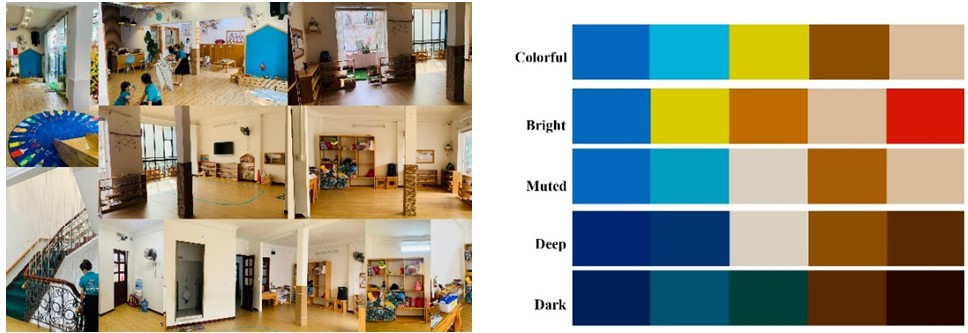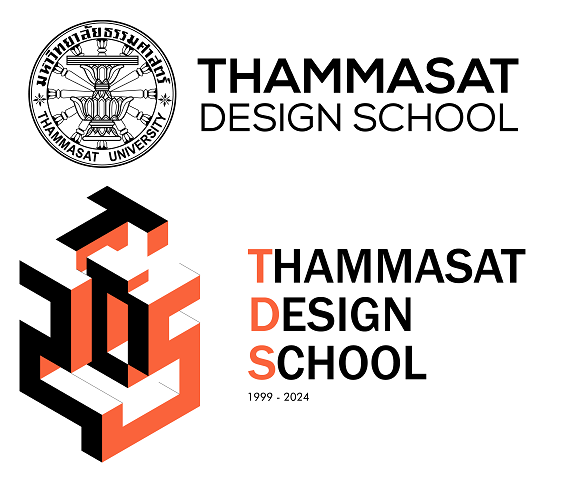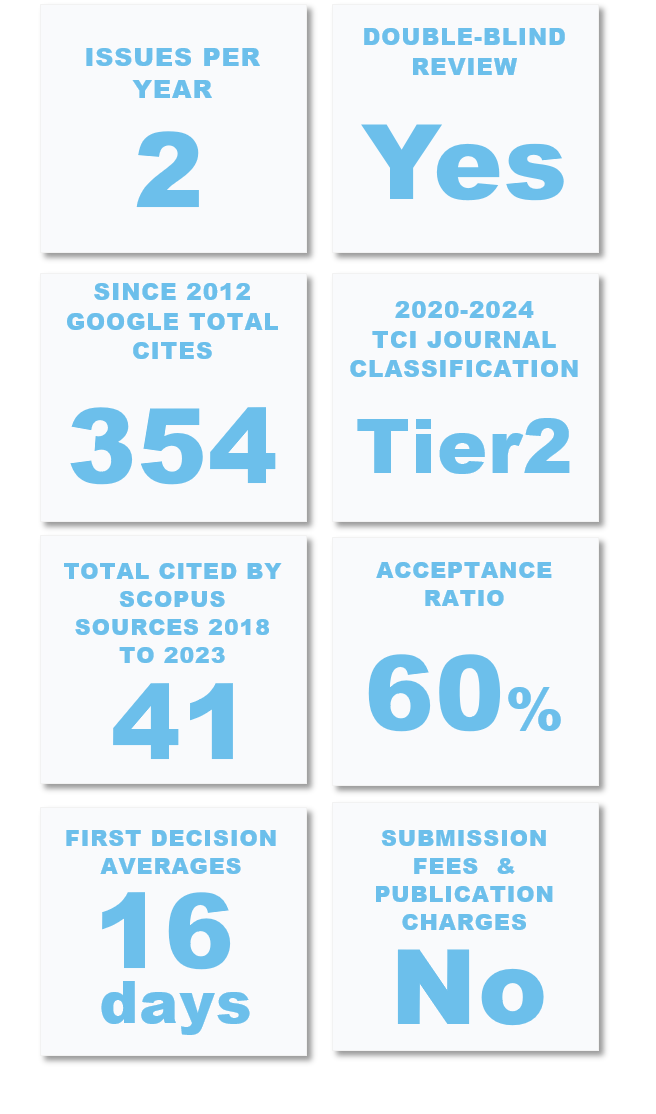Color Design in Preschool Interior Spaces: A Comparative Analysis of Two Preschools in Ho Chi Minh City, Vietnam
DOI:
https://doi.org/10.56261/built.v23.255571Keywords:
Color design, Preschool interior space, Children’s development, PedagogyAbstract
As one of the crucial components of the microsystem system in human development, the educational environment plays a significant role in shaping young children’s holistic development. Preschool interior space could be one of the most important places where children first interact in school life. Specifically, the interior space of preschool is the place where young children spend a lot of time in their lives surpassing the home environment. In Vietnam, research on preschool interior design, particularly in the context of color usage, remains limited despite there is high demand to build preschool buildings to adapt to the increasing number of young children going to kindergarten each year, such as in Ho Chi Minh City (HCMC). This paper explores color designs in preschool interiors in HCMC, Vietnam; aiming to propose colors that align with children’s developmental needs and pedagogical practices. Through conducting the data from reviewing academic articles and papers, on-site observation case studies in both public preschool and private preschools, focus on interior classroom space, visual-spatial, and color comparative analysis, and utilizing Adobe's palette extractor for color palette, this paper explores the application of color design in preschool interior space. The findings suggest the potential benefits of using bright and cool tones for background colors, complemented by vibrant hues such as blue, red, yellow, or orange for accents in interior spaces. Aligning with pedagogical practices, the use of color can create stimulating environments that encourage children to explore and discover. Additionally, attention should be given to factors such as flooring materials, cultural context, and spatial functionality. The findings of this paper contribute to the limited academic resources on color space design in Vietnam, providing valuable insights for architects, interior designers, teachers, and educators to make informed decisions when designing preschool environments.
Downloads
References
Adobe Color. (n.d.). Adobe color. https://color.adobe.com/
Aetoancau. (2022). Phu Nhuan District, Ho Chi Minh City: Assessment of development potential. https://aetoancau.vn/quan-phu-nhuan-thanh-pho-ho-chi-minh-danh-gia-tiem-nang-phat-trien/
A. Ranka, K. Doshi, S. Parmar. (2022). Understanding the role of colour & forms in design of children’s learning spaces. International Journal of Multidisciplinary and Current.
Ali Dehghanpisheh, Mahrokh Rajabi. (2018 ). Investigating the effect of color on spatial tolerance. Betriebswirtschaftliche Forschung Und Praxis. DOI: https://doi.org/10.29252/bfup.9.3.6
AlShabanah, H. (2014). Creating color schemes to help avoid distraction in a classroom for toddlers with special needs. California State University Northridge.
B. Saha, A. Adhikari. (2023). The Montessori Method of Education of the Senses: The Case of the Children’s Houses. International Journal of Research Publication and Reviews, Vol 4, no 5, pp 6671-6673.
Berris, R., & Miller, E. (2011). How design of the physical environment impacts early learning: Educators’ perspectives. Australasian Journal of Early Childhood, 36(4), 102-110. DOI: https://doi.org/10.1177/183693911103600414
Boyatzis, C. J., & Varghese, R. (2010). Children's emotional associations with colors. The Journal of Genetic Psychology, 155(1), 77–85. DOI: https://doi.org/10.1080/00221325.1994.9914760
Cameron, B. A., Brown, D.M., Carson, D.K., Meyer, S.S., & Bittner, M.T. (1993). Children's creative thinking and color discrimination. Journal of Genetic Psychology, 76(2), 595–598. DOI: https://doi.org/10.2466/pms.1993.76.2.595
Cao, Y. (2019). Analysis of the uses of color elements in architectural interior design. Journal of World Architecture, 2(2), 9-13. DOI: https://doi.org/10.26689/jwa.v2i2.591
Ching, Francis D.K. (2018). Interior design illustrated (4th ed.). Wiley.
D. Stankovic, A. Milojkovic, M. Tanić. (2006). Physical environment factors and their impact on the cognitive process and social behavior of children in the preschool facilities. Education, Psychology, Environmental Science. DOI: https://doi.org/10.2298/FUACE0601051S
D. Thao, W. A. Boyd. (2012). Renovating early childhood education pedagogy: a case study in Vietnam. International Journal of Early Years Education, Pages 184-196. DOI: https://doi.org/10.1080/09669760.2014.909306
David, T. G., & Weinstein, C. S. (1987). The built environment and children’s development. In, C.S. Weinstein & T.G. David (Eds.), Spaces for children (pp. 21–45). Springer. https://doi.org/10.1007/978-1-4684-5227-3_1 DOI: https://doi.org/10.1007/978-1-4684-5227-3_1
Debs, M.C., de Brouwer, J., Murray, A.K., Lawrence, L., Tyne, M., & von der Wehl, C. (2022). Global diffusion of Montessori schools: A report from the 2022 Global Montessori Census. Journal of Montessori Research, 8(2), 1-15. DOI: https://doi.org/10.17161/jomr.v8i2.18675
Go Vap District People's Committee. (2019). Summary of the 2019 population and housing census in Go Vap district [In Vietnamese]. https://govap.hochiminhcity.gov.vn/
Hang, Dinh T.T. (2019). Quality matters in Vietnamese early childhood education: The situation and the challenge. The Annual Research on Early Childhood, 15–21.
Hoang, N., Holopainen, L., & Siekkinen, M. (2018). Children’s classroom engagement and disaffection in Vietnamese kindergartens. Educational Psychology, 39(2), 254–270. DOI: https://doi.org/10.1080/01443410.2018.1524854
Hill, C. (2011). Named and unnamed spaces: Color, kin, and the environment in Umpila. The Senses and Society, 6(1), 57-67. https://doi.org/10.2752/174589311X12893982233759 DOI: https://doi.org/10.2752/174589311X12893982233759
Hill, M. (2011). Young children and their perceptions of color: An exploratory study. Educational Psychology.
Cong Bao Ho Chi Minh City. (2015). Decision No. 2816/QD-UBND: Recognition of Hoa Lan Kindergarten, Go Vap District. Retrieved from http://congbao.hochiminhcity.gov.vn/tin-tuc-tong-hop/cong-nhan-truong-mam-non-hoa-lan-quan-go-vap
Creative Kiddo. (n.d.). Creative Children's Bilingual Kindergarten System. Retrieved from http://creativekiddo.edu.vn/
Mam Non Tre Sang Tao. (n.d.). Concept of upbringing. Retrieved from https://mamnontresangtao.edu.vn/tin-tuc/quan-niem-nuoi-day.html
MN Hoa Lan Go Vap. (n.d.). Home page. Retrieved from https://mnhoalangovap.hcm.edu.vn/homegd3
Thanh Nien. (2024). Ho Chi Minh City has 1,248 kindergartens, 29 facilities with foreign elements. Retrieved from https://thanhnien.vn/tphcm-co-1248-truong-mam-non-29-co-so-co-yeu-to-nuoc-ngoai-185240814105501291.htm
Chinh Phu HCMC. (2024). HCMC: Nearly 10,000 preschool children increase each year. Retrieved from https://tphcm.chinhphu.vn/tphcm-moi-nam-tang-gan-10000-tre-mam-non-101240921225851677.htm
Nguoi Dua Tin. (2024). Ho Chi Minh City: Efforts to build schools to prepare for the new school year. Retrieved from https://www.nguoiduatin.vn/tphcm-no-luc-xay-dung-truong-hoc-chuan-bi-cho-nam-hoc-moi-204240710192934674.htm
J.Victoryana, I. A. Wirakusumah, I. Sudradjat. (2024). Implementation of Children's Architectural Design Principles in Child-Friendly School Buildings (Case Study: Fuji Kindergarten, Japan & Farming Kindergarten, Vietnam). Jurnal Indonesia Sosial Teknologi , Vol. 5 No. 7 (2024). DOI: https://doi.org/10.59141/jist.v5i7.1205
Matthews, E., & Lippman, P. C. (2020). The design and evaluation of the physical environment of young children’s learning settings. Early Childhood Education Journal, 48, 171-180. DOI: https://doi.org/10.1007/s10643-019-00993-x
Mazlum, Ö., & Mazlum, F. S. . (2019). A study on conceptual association of colors in preschool children . DOI: https://doi.org/10.14527/pegegog.2019.024
Meerwein, G., Rodeck, B., & Mahnke, F. (2007). Color communication in architectural space. Birkhäuser. DOI: https://doi.org/10.1007/978-3-7643-8286-5
Mezentseva, O. (2019). Creating harmonious school learning environment: Waldorf education perspective. International Journal of Advanced Research, 7(7), 691-696. DOI: https://doi.org/10.21474/IJAR01/9412
Mira C. D et al. (2022). Global Diffusion of Montessori Schools: A Report from the 2022 Global Montessori Ceasus. Journal of Montessori Research
Ministry of Education and Training. (2021). Consolidated document no.01/VBHN-BGDĐT. Circular promulgating the Preschool Education Program.
Nguyen Thi Tam, A., Joneurairatana, E., & Sirivesmas, V. (2024). Color design in the physical learning
environment influences preschool children’s cognitive development. In: Ha-Minh, C., Pham, C.H., Vu, H.T.H., & Huynh, D.V.K. (eds) Proceedings of the 7th International Conference on Geotechnics, Civil Engineering and Structures, CIGOS 2024, 4-5 April, Ho Chi Minh City, Vietnam. CIGOS 2024. Lecture Notes in Civil Engineering, vol 482. Springer. https://doi.org/10.1007/978-981-97-1972-3_114 DOI: https://doi.org/10.1007/978-981-97-1972-3_114
N. Sau, C. Phuong, H. Hoi . (2020). Benefits of Building Child-centered Learning Environment in Kindergarten . Universal Journal of Educational Research. DOI: https://doi.org/10.13189/ujer.2020.081241
Olds, A. (1987). Designing Settings for Infants and Toddlers. In Spaces for Children. Weinstein, C.S., David, T.G.: Springer, Boston, MA. DOI: https://doi.org/10.1007/978-1-4684-5227-3_6
Pitchford, N.J., Davis, E.E., & Scerif, G. (2010). Does color preference have a role in color term acquisition?. British Journal of Developmental Psychology, 28, 993–1012. DOI: https://doi.org/10.1348/026151008X399916
Qing, L. (2023). Discussion on the color design of kindergarten interior space. Highlights in Art and Design. DOI: https://doi.org/10.54097/hiaad.v2i1.5495
R. Ghayouri, S. Ayat . (2020). Color Preference Based on Children’s Choices for the Interior Spaces of Kindergartens . International Research Journal of Advanced Engineering and Science, 154-159.
Read, M. (2019). Designing with Color in the Early Childhood Education Classroom: A Theoretical Perspective. Creative Education. doi:https://doi.org/10.4236/CE.2019.106080 DOI: https://doi.org/10.4236/ce.2019.106080
Read, M. A. (2023). Color, form, and light: Recommendations for design of ECE classrooms based on group structure and activity type. Creative Education, 14(9), 1022–1030. DOI: https://doi.org/10.4236/ce.2023.149117
Read, M. A. et al. (2009). Young children's color preference in the interior environment. Early childhood education journal, 491-496. DOI: https://doi.org/10.1007/s10643-009-0311-6
Read, Marilyn A. (2003). Use of Color in Child Care Environments, Application of Color for Wayfinding and Space Definition in Alabama Child Care Environments. Early Childhood Education Journal. DOI: https://doi.org/10.1023/A:1023387607942
S. Xiaoxian, W. Meicheng. (2021). Spatial Color Analysis of Kindergarten Interior Design Based on Children's Psychological Activities in Digital Environment. 3rd International Conference on Energy Resources and Sustainable Development (ICERSD 2020). E3S Web Conference. DOI: https://doi.org/10.1051/e3sconf/202123605011
Said, I. (2007). Architecture for children: Understanding children’s perception towards built environment. Faculty of Built Environment, Universiti Teknologi Malaysia.
Santrock, J. W. (2000). Children’s development (9th ed.). McGraw-Hill.
Shaari , M.F. , Zaiki , Y. , Sh. Ahmad, S. and Ismail . (2021). Modified Open-Plan Preschool Spaces and their Influence on Childrens Cognitive Development. . Asian Journal of Environment-Behaviour Studies. DOI: https://doi.org/10.21834/ajebs.v6i18.382
Thung, C. X., & Ahmad, H. (2022). Color psychology in kindergarten classroom. ARTEKS Jurnal Teknik Arsitektur, 7(1), 61–66. DOI: https://doi.org/10.30822/arteks.v7i1.1188
Terreni, L. (2019). The art of successful designing a quality . International Art in Early Childhood Research Journal, Volume 1, Issue 1.
Wang, M. (2016). A model of sustainable educational space: Farming kindergarten in Bien Hoa, Vietnam. Landscape Architecture Frontiers, 4(2), 119.
Yalcin, M., Bozdayi, A. M., & Ertek, M. H. (2017). Cultural determinants within the design setup of kindergarten and preschool interiors. Emerging Sources Citation Index (ESCI). DOI: https://doi.org/10.5505/megaron.2017.49469

Downloads
Published
How to Cite
Issue
Section
License
Copyright (c) 2025 International Journal of Building, Urban, Interior and Landscape Technology (BUILT)

This work is licensed under a Creative Commons Attribution-NonCommercial-NoDerivatives 4.0 International License.











